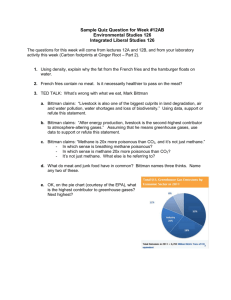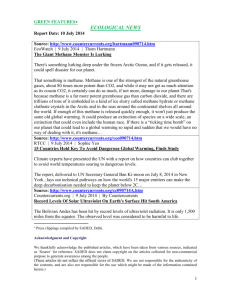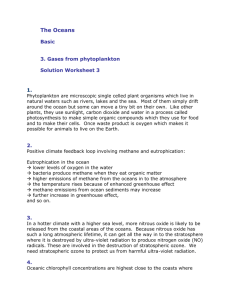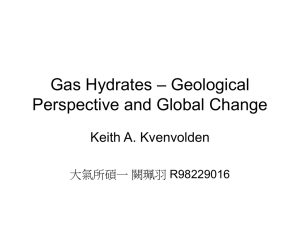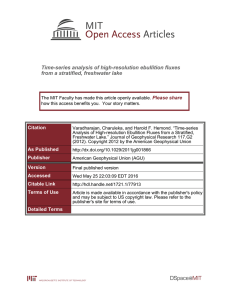Global Warming Feedbacks of Methane Bubbling along Expanding
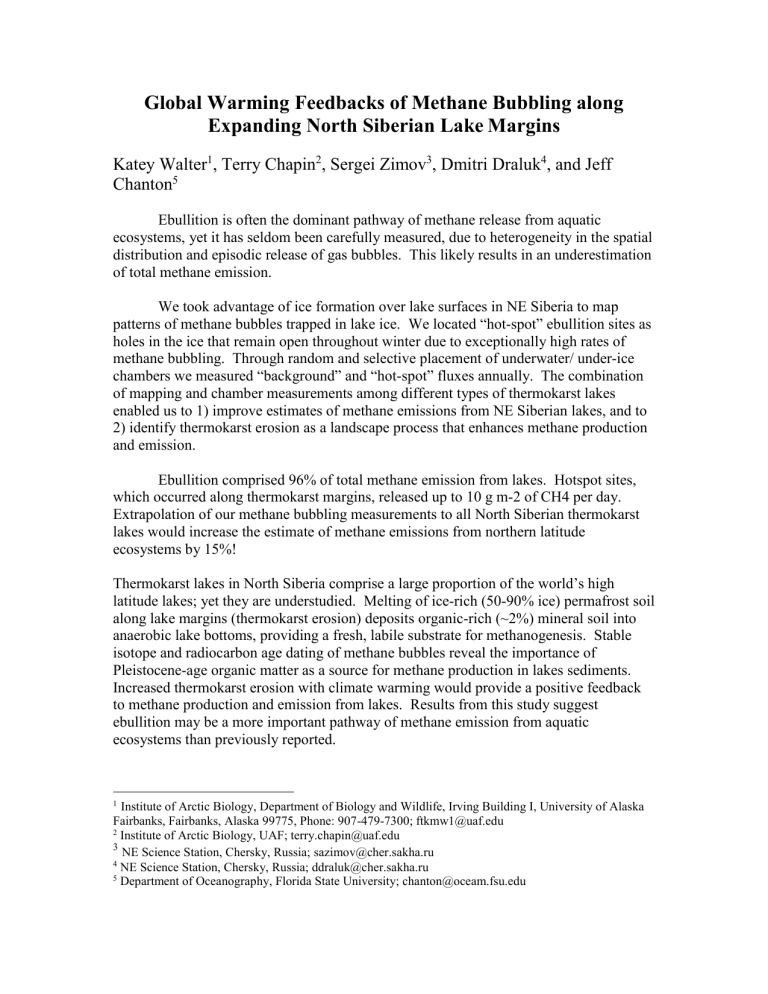
Global Warming Feedbacks of Methane Bubbling along
Expanding North Siberian Lake Margins
Katey Walter
1
, Terry Chapin
2
, Sergei Zimov
3
, Dmitri Draluk
4
, and Jeff
Chanton
5
Ebullition is often the dominant pathway of methane release from aquatic ecosystems, yet it has seldom been carefully measured, due to heterogeneity in the spatial distribution and episodic release of gas bubbles. This likely results in an underestimation of total methane emission.
We took advantage of ice formation over lake surfaces in NE Siberia to map patterns of methane bubbles trapped in lake ice. We located “hot-spot” ebullition sites as holes in the ice that remain open throughout winter due to exceptionally high rates of methane bubbling. Through random and selective placement of underwater/ under-ice chambers we measured “background” and “hot-spot” fluxes annually. The combination of mapping and chamber measurements among different types of thermokarst lakes enabled us to 1) improve estimates of methane emissions from NE Siberian lakes, and to
2) identify thermokarst erosion as a landscape process that enhances methane production and emission.
Ebullition comprised 96% of total methane emission from lakes. Hotspot sites, which occurred along thermokarst margins, released up to 10 g m-2 of CH4 per day.
Extrapolation of our methane bubbling measurements to all North Siberian thermokarst lakes would increase the estimate of methane emissions from northern latitude ecosystems by 15%!
Thermokarst lakes in North Siberia comprise a large proportion of the world’s high latitude lakes; yet they are understudied. Melting of ice-rich (50-90% ice) permafrost soil along lake margins (thermokarst erosion) deposits organic-rich (~2%) mineral soil into anaerobic lake bottoms, providing a fresh, labile substrate for methanogenesis. Stable isotope and radiocarbon age dating of methane bubbles reveal the importance of
Pleistocene-age organic matter as a source for methane production in lakes sediments.
Increased thermokarst erosion with climate warming would provide a positive feedback to methane production and emission from lakes. Results from this study suggest ebullition may be a more important pathway of methane emission from aquatic ecosystems than previously reported.
1 Institute of Arctic Biology, Department of Biology and Wildlife, Irving Building I, University of Alaska
Fairbanks, Fairbanks, Alaska 99775, Phone: 907-479-7300; ftkmw1@uaf.edu
2 Institute of Arctic Biology, UAF; terry.chapin@uaf.edu
3
NE Science Station, Chersky, Russia; sazimov@cher.sakha.ru
4 NE Science Station, Chersky, Russia; ddraluk@cher.sakha.ru
5 Department of Oceanography, Florida State University; chanton@oceam.fsu.edu



